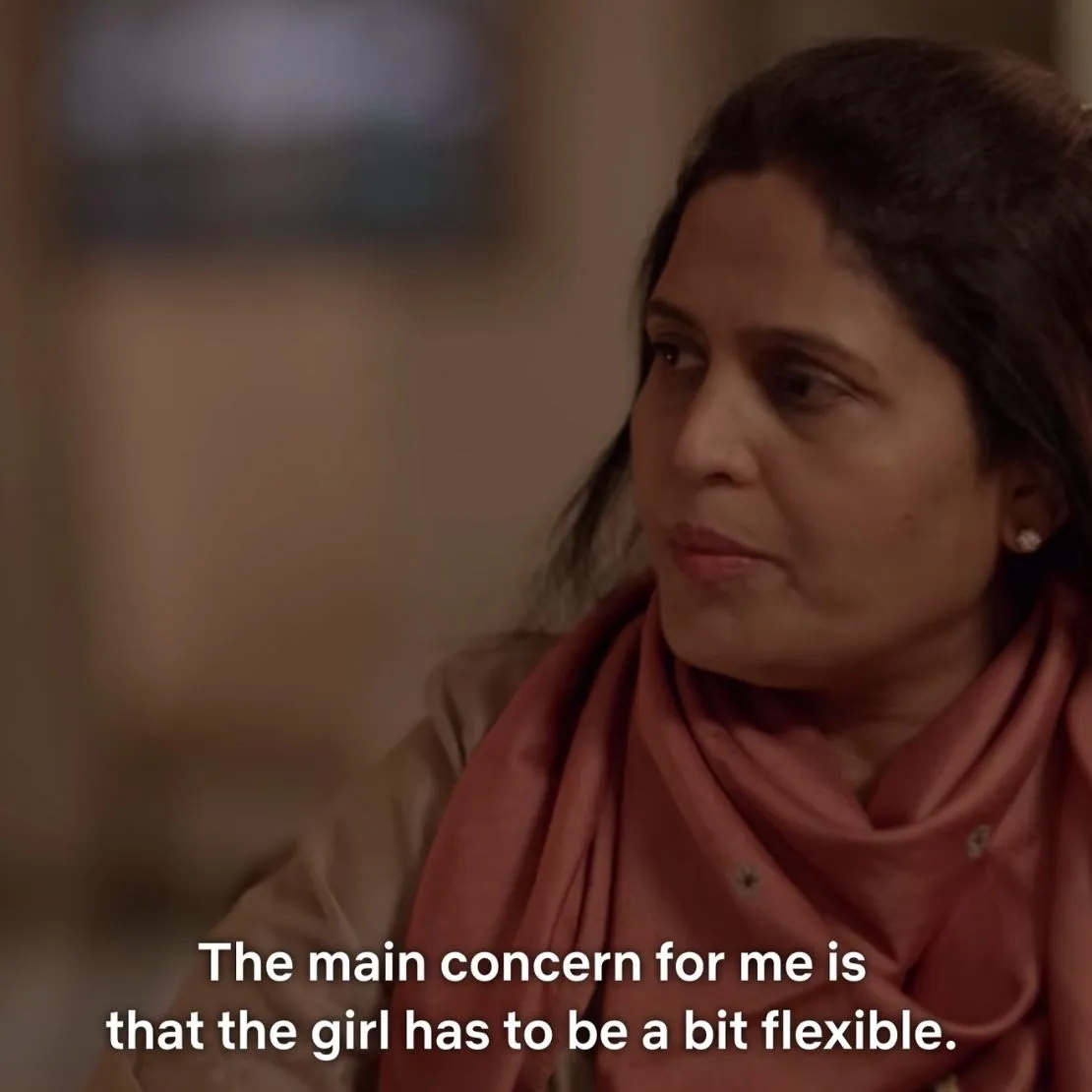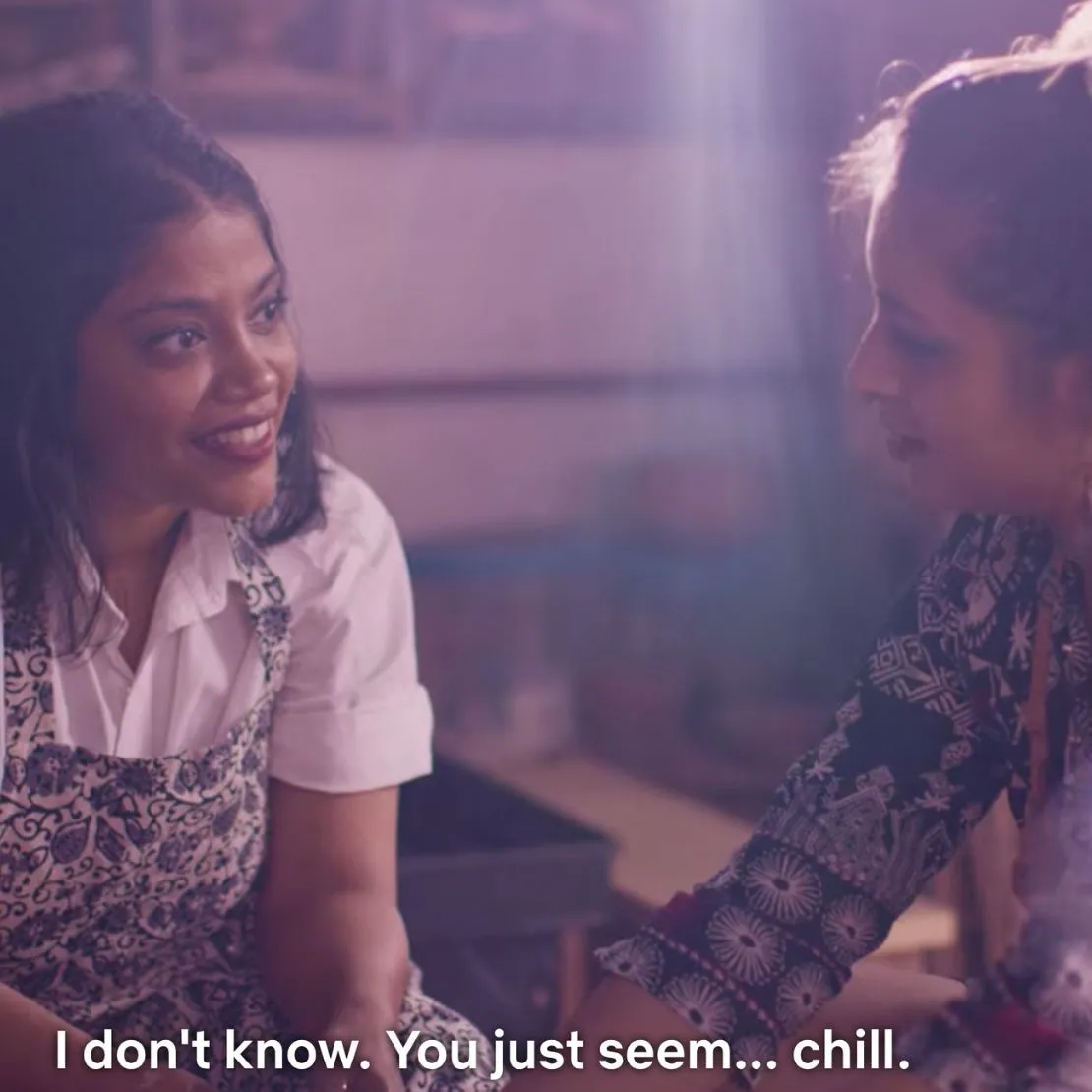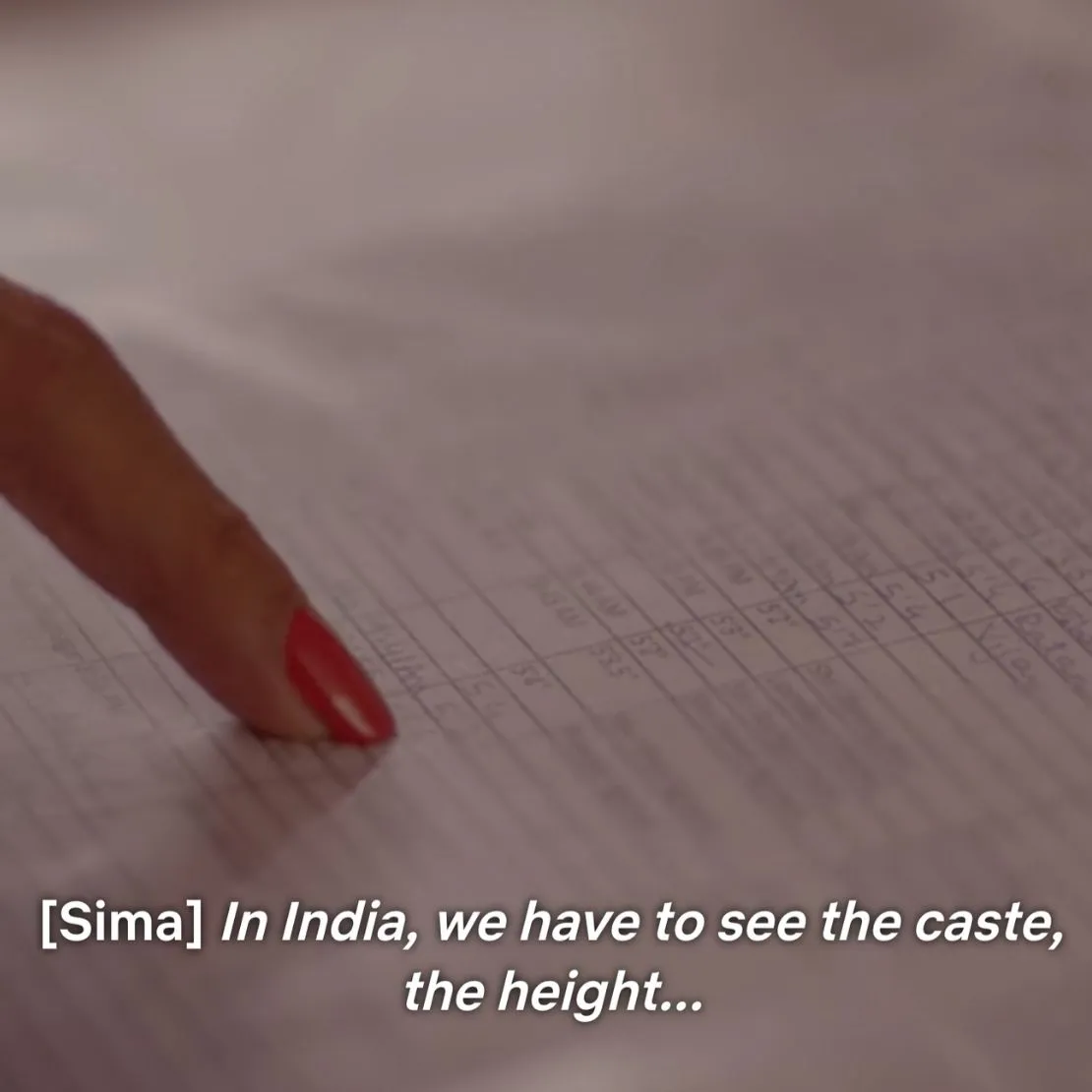Why are we even triggered?
Netflix’s long list of reality dating shows has now an addition from the land of India. 'Indian Matchmaking' follows matchmaker Sima Taparia in parts of America and Mumbai where she meets men and women who are looking for a life partner.
The concept of an arranged marriage is not new to us. Already rooted in caste, class, skin color, religion and gender bias, 'Indian Matchmaking' offers progressive content just as much as Fox News offers facts.
A series of 8 episodes, the show for me was highly binge-able. Mainly because there is no suspense in watching it as a darker skinned, middle class Indian woman. There’s only amusement.
Sima doesn’t mince her words when she defines a good “choice” for a girl as someone who is fair, slim & trim, and my favourite, flexible. In case you’re wondering, a flexible woman is someone who will mould herself into meeting the demands of her future in-laws and not someone who will bring medals for gymnastics. We don’t want our daughters-in-law jumping around in front of the world. That sight is purely for our own eyes.

There’s always an Akshay waiting to find this flexible girl. Akshay can be defined as a rich, upper caste, Hindu man who will marry anyone his mother chooses because he says and I quote, “My mom is literally what I want to be looking at in a wife.” Akshay(s) are usually sent abroad to study where they struggle with their identities as they have never made their own beds before.
When show’s Akshay meets a potential match, she tells him she wants to be a working woman. She wants to make something of her own and doesn’t want to be staying at home all day. Our boy stays true to his character and says, “How can that be? If she works, who will take care of the kids?”
Akshay is only 25. I don’t think kids should worry about kids.
On the other hand, it was refreshing to see Indian girl Ankita who is independent and doesn’t fall for ageism. As someone who grew up in India, I know we are not the best represented on the Western TV. We are played by actors who do over-the-top unnecessary accents (tsk Never Have I Ever) and are shown as regressive women with a backward mindset – which are stereotypes certainly not always true.
I enjoyed this particular scene (pictured below) where Ankita talks about her life with her girlfriend - and not a man - during a pottery class.

'Indian Matchmaking' follows a pattern where one’s biodata is shared with possible prospects. Each case Sima took up in season 1 belonged to an upper caste family. She admits it and says, “In India we have to look at caste.”
Breaking news: She is not wrong.
India is a deeply casteist country. A country where Brahmins continue to prosper, and Dalits continue to fight for basic human rights. Only a few days ago, we read about police brutality against a Dalit couple in Guna, Madhya Pradesh. Twitter rage lasted for a total of 30 hours. Let’s not behave as if our families don’t keep separate dishes for house helps. Let’s not pretend to be anti-casteist while we as a country continue to let Manu’s statue stand inside the high court – a palace of justice.
But does that mean a show like 'Indian Matchmaking' should let caste bias slide without any commentary? We know sexual assault exists. That doesn’t mean we talk about it irresponsibly.
Basically, normalising caste bias glorifies it.

I see a lot of social media users cringing at Sima’s comments on a “fair” bride. What is she saying that we don’t already know? Are we going to be Karens and say we don’t see color? If that really is the case – then why did it take Fair & Lovely the biggest civil rights movement of our times to even consider dropping “Fair” from its name. If we really don’t see skin color, why are we hash tagging BLM? Skin colour bias exists and Indians are some of the biggest players, too. Skin lightening industry in our country alone makes $50 billion a year.
It is not surprising our matrimonial ads are full of demands wanting a “light skinned, thin, cultured” bride.
It is matter of concern to see anger about caste and colour on social media because of a Netflix reality show when we never see such an outrage because of our actual realities.
To think 'Indian Matchmaking' has produced itself out of the blue is indeed living in a bubble. To be surprised with the content or wonder why older unmarried women are treated badly is living in denial. This is how most of our society functions – and it is a shame.
If the caste, class and gender bias bothered you – welcome. This is the time to make amends in our lives, to learn, unlearn, educate and engage. Our every action towards an equal world is activism.
Before you laugh at some of the memes, ask yourself: Why is that even funny?
Is it because it is so normal or because it's so painful that laughing is a respite.
Either way, it is time to think, act, organise and change.